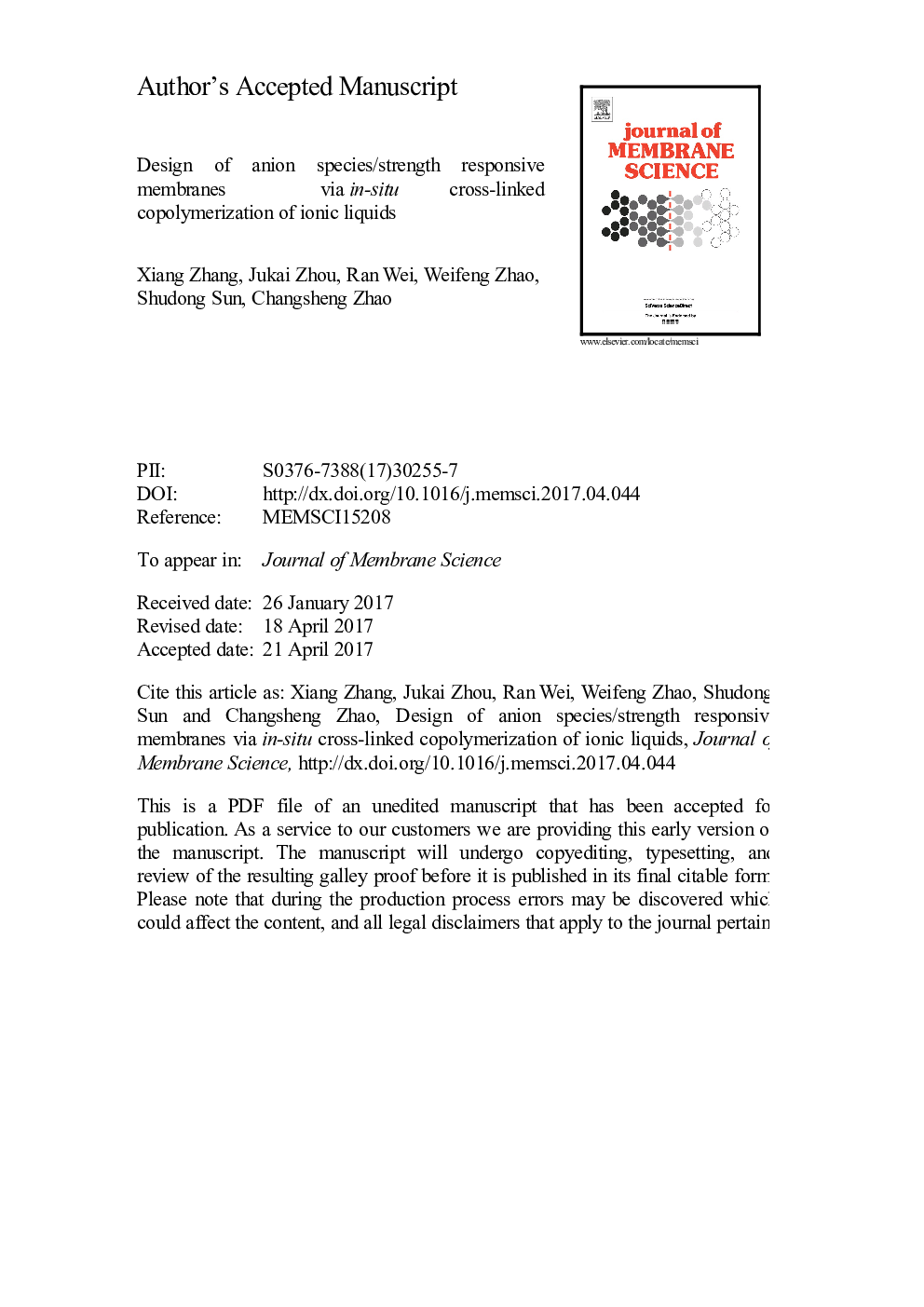| Article ID | Journal | Published Year | Pages | File Type |
|---|---|---|---|---|
| 4988904 | Journal of Membrane Science | 2017 | 28 Pages |
Abstract
A series of poly(ionic liquid)s (PILs) modified polyethersulfone membranes were fabricated via an in-situ cross-linking copolymerization method. Due to the positive charge and ion-exchange properties of the PILs, the membranes showed anion species and strength responsive behaviors. The morphologies and chemical compositions of the membranes were characterized by scanning electron microscope and X-ray photoelectron spectroscopy. The anion species and strength responsive properties were investigated by measuring the fluxes of the membranes with various anion species and concentrations of salt solutions. The anion strength response of the membranes was positive, and the responsive coefficient of the membranes (the ratio of the salt water flux to pure water flux) could reach 26 times when responded to the stimulus of NaCl aqueous solution; the cation species and concentrations had barely influence on the responsive behavior. Meanwhile, the membranes were responded to both anion species (including PF6â, BF4â and SCN-) and their strength: the pure water fluxes and the morphologies of the modified membranes changed associated with different types of anions, and the membranes after ion-exchanging also showed obvious anion strength responsive behaviors to the corresponding salt solutions. The facile design of anion-responsive membranes via in-situ cross-linking polymerization opens up a new route to fabricate “intelligent” membranes for ion-recognizable chemical/biomedical separations and purifications.
Related Topics
Physical Sciences and Engineering
Chemical Engineering
Filtration and Separation
Authors
Xiang Zhang, Jukai Zhou, Ran Wei, Weifeng Zhao, Shudong Sun, Changsheng Zhao,
